By Jenn Gidman
Images By Aim Lorejas
Aim Lorejas started taking pictures in 2015, when he and his wife would travel on the weekends to national parks and other destinations within driving distance from their home in Arcadia, California. They had to cut back somewhat once their first child was born—two more soon followed—but the Lorejas family still ventures out many times a year on camping and hiking adventures.
“My wife is a nurse and works three days a week, so we do still have time to travel a bit,” Aim says. “I’m a morning person, so it’s not uncommon while we’re on our trips for me to get up at 4 a.m., head out to take some landscape photos while everyone else is still asleep in the tent, then be back in time for breakfast and a day with my family.”
Aim’s Tamron SP 15-30mm F/2.8 G2 lens was his first recent purchase, and he was soon impressed with how it captured the wide expanses in front of his camera. “It’s super-sharp, and I love the Vibration Compensation (VC) feature,” he says. “Sometimes I’ll take one-second exposures handheld, and the VC is really critical in helping me keep my pictures sharp. Plus it’s got a moisture-resistance construction that keeps the elements at bay, like when I’m shooting in Yosemite. The picture you see here of El Capitan was the first time I ever used the 15-30 in a snowstorm, and it held up like a champ.”
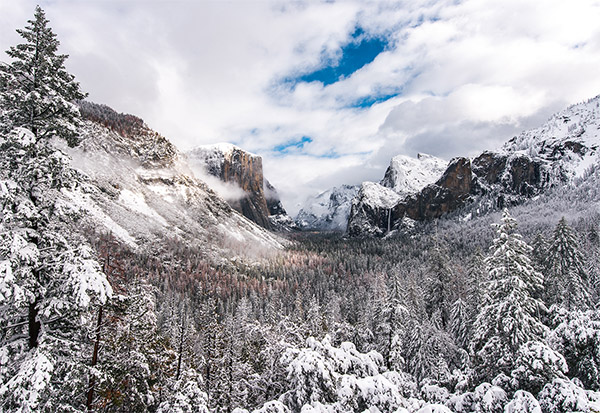
SP 15-30mm (18mm), F/16, 1/60th sec., ISO 100
Then, not too long ago, Aim decided to supplement his wide-angle lens with a telephoto. “It seemed a no-brainer to try out the Tamron SP 70-200mm F/2.8 G2,” he says. “I really like to see things from different perspectives in my landscape photography, and my 70-200 helps me do that. I love my 15-30, but sometimes, depending on the scene, I can almost be showing too much. By zooming in with the 70-200, I can direct my viewers to the details I want them to look at. And the sharpness of that lens in showing those details blows my mind.”
The compression offered by the 70-200 can also come in handy during landscape sessions. “I was in the Grand Tetons when I spotted this barn a few minutes before the golden hour,” he says. “The kids were playing while I set the 70-200 G2 on my tripod. The mountains behind the barn aren’t actually that close or that large, but with the compression I get with the 70-200, it looks like the mountains are right there.”
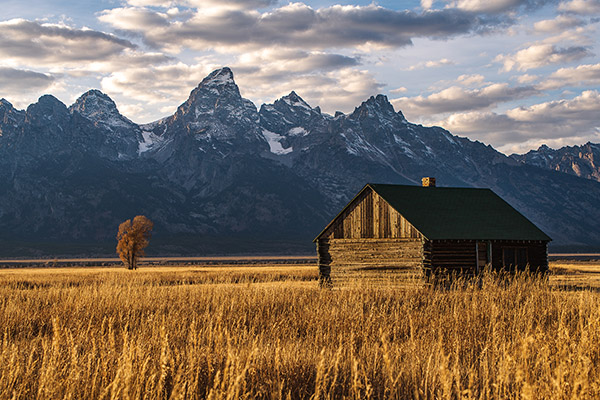
SP 70-200mm (70mm), F/10, 1/100th sec., ISO 100
The Painted Dunes in Lassen Volcanic National Park are one of the most compelling visuals in the US national parks system, with colorful pumice fields made of oxidized layers of volcanic ash. It’s also where Aim got to put the 70-200’s Vibration Compensation (VC) feature to the test. “I drove 11 hours from LA to get to the trailhead, and I started hiking at 3:30 a.m. to make sure I was at the top of the Cinder Cone, looking down on the landscape, by sunrise,” he says.
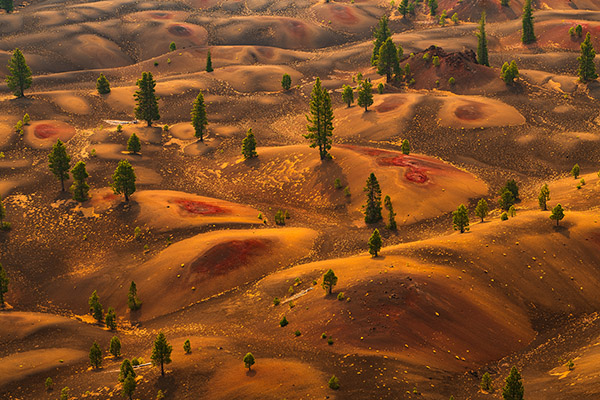
SP 70-200mm (125mm), F/13, 1/10th sec., ISO 80
The gravel was quite loose on Aim’s hiking trail, and it was windy. “Even though I have a good tripod, there was still quite a bit of camera shake, so I turned the VC on, and it was a great help in helping keep the picture sharp,” he says. “As the sun rose, the light was filtering through the haze and smoke in the area from the nearby Carr Fire, making the dunes even more golden than usual. To me, the photo almost looks like a painting.”
He also captured a single tree centered in the center of a sheet of black lava. “I took this shot as I was walking back from my Painted Dunes photo,” he says. “What impressed me here, besides this tree’s resilience in an inhospitable environment, was the sharpness of the 70-200 and the detail it offered in the landscape. Those orange-ish glittery objects in the field? They’re boulders the size of basketballs. If you look really closely at the tree and zoom in, you can spot one lone black boulder nearby.”
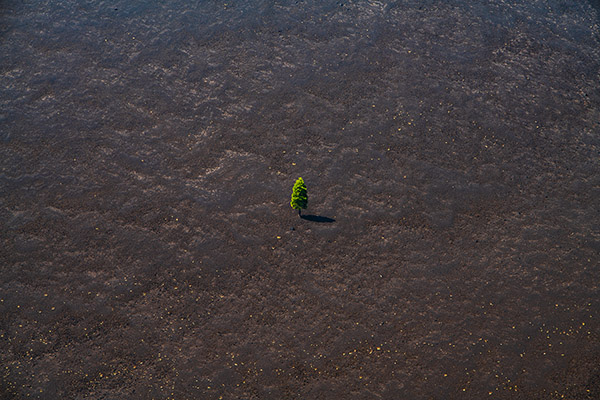
SP 70-200mm (200mm), F/11, 1/25th sec., ISO 80
Some of Aim’s trips involve even more preparation. His photo of a red barn in the center of the Hood River Valley was a year in the making, with Aim researching the site using Google Earth and Google Maps, then keeping tabs on it to see when the flowers there were in bloom. “Once they were, I headed up north, and it rained for two days straight as I drove,” he says. “I was worried I wouldn’t have a good day to take pictures. On my last driving day, I got up at 3 in the morning and was where I needed to be before sunrise. I set up my shot with the flowers in the foreground and waited for the sun to come up. When it did, there was that photogenic cloud cap over Mount Hood.”
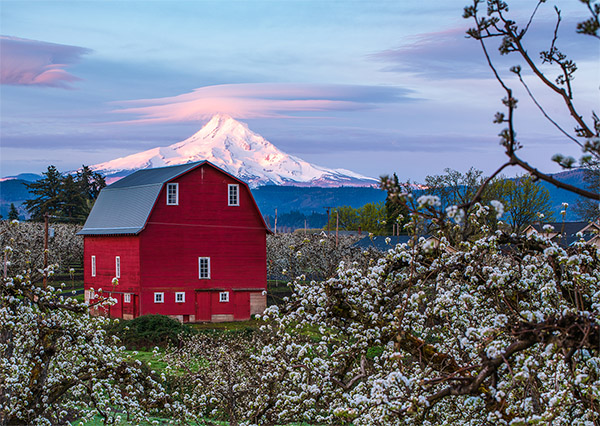
SP 70-200mm (82mm), F/10, 0.5 sec., ISO 80
Using the 70-200 and taking advantage of its maximum F/2.8 aperture allows Aim to shoot in low-light conditions, like his Alabama Hills nighttime shot of Mount Whitney, the highest peak in the contiguous United States. “It’s tough to find a good telephoto lens with that F/2.8,” he says. “I’ve tried others at that aperture and didn’t love the results, so I was nervous how this moonrise shot would turn out. As you can see, I didn’t have to worry. Look at the detail in this photo and how sharp everything is, including all of those stars.”
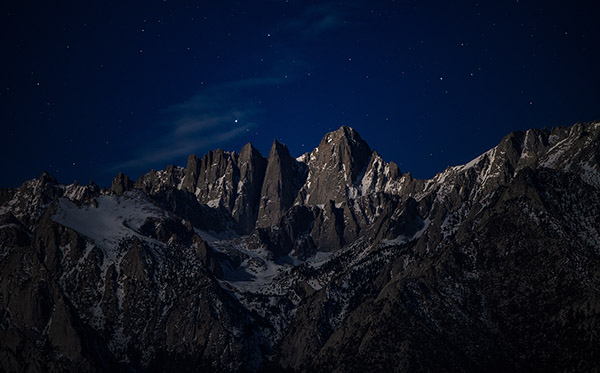
SP 70-200mm (200mm), F/2.8, 3 sec., ISO 800
When it comes to post-processing, Aim takes his inspiration from old-school photographers. “I want to take pictures correctly in-camera, right from the get-go,” he says. “That way, I don’t have to do a lot of fixes later on. It will take me maybe 10 minutes per photo—I’ll do a little sharpening and some contrast adjustments, but nothing major. However, what I’ll do the following day is look at the image again and tweak it a bit more, and then again over the next week or so. It’s amazing how you see things from a new perspective in the light of a new day.”
To see more of Aim Lorejas’ images, check out his Instagram at www.instagram.com/aimpalaboy.
